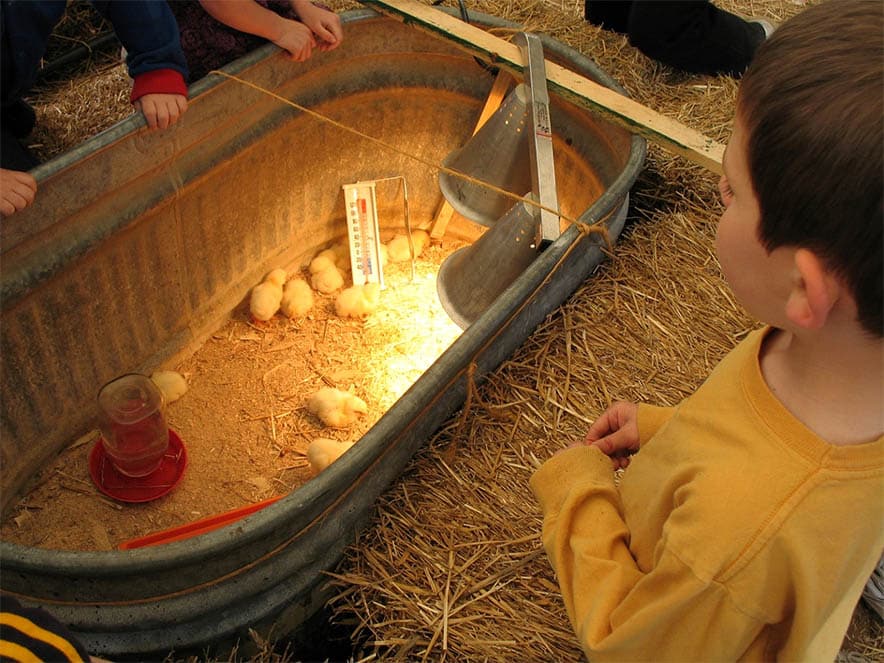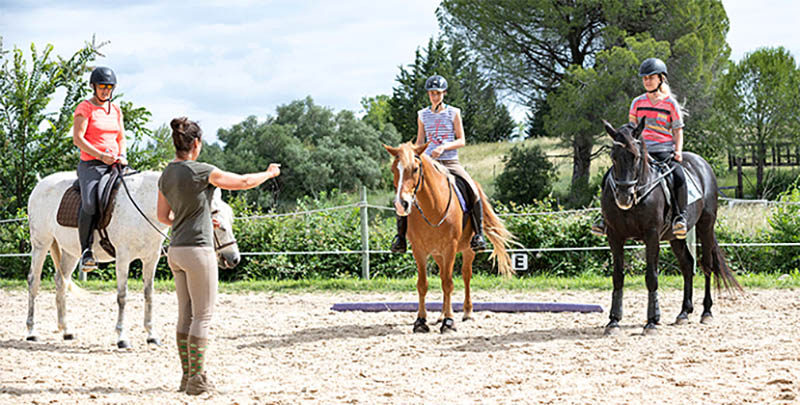Hopefully, before you bought home those cute ‘hold in the palm of your hand’ yellow furry chicks you created a chick brooder where they could safely develop out of reach of curious family pets and suitably confined with a minimum 12” deep sidewall to keep them from making the great escape.
There are four major chicken milestones between chick to chicken and each one comes with its own special needs in regard to the feed you provide, the size of the brooder and the transition to the coop. Learn about the different stages of a chicken’s life below!
1 to 4 weeks Of Cuteness Overload
Chicks may require a medicated feed if not previously vaccinated at the hatchery for coccidiosis. A high protein feed that is packed with vitamins and minerals, as well as the body-building amino acids, and prebiotics and probiotics is a good idea. Like any newborn the chicks are vulnerable to disease and illness and building their immunity with a good diet is essential.
For housing, a simple containment system of a cardboard box, plastic or metal tub, or a repurposed baby or dog playpen will suffice. As the chicks literally ‘spread their wings,’ and age past 3 weeks, the addition of a wire cover may be needed on lower sided containers to keep the residents at home.
Be aware that a slippery floor in a brooder can cause damage to the tendons of the birds as they grow resulting in their inability to stand as adults. To avoid this issue place shredded newspaper, a 2-inch layer of untreated pine shavings or large grain sand in the base as a bedding layer. Expect to have to regularly clean the brooder (once daily) to keep the chicks healthy and remember that the fur will soon give way to feathers so you can expect to see some dust as this transition takes place.
Waterers may be a dish or a nipple style. The latter is a cleaner and healthier option.
A starter flock should be just 5 or 6 chicks, though it is easy to get carried away at the store and buy more than just a handful. Locate the brooder in a place that is free of moisture and cold drafts, in a peaceful low traffic area where they can be monitored but is away from constant noise and certainly off limits to pets and unsupervised young children.
The younger the chicks the warmer they’ll need to be kept so plan to add a heat lamp or a heat plate. The latter is the more expensive option but if you plan to increase your chicken flock each year it is well worth the investment.
A suggested temperature is 90 degrees Fahrenheit for the 1-week-old chicks, decreasing 5 degrees per week as the chicks age up to 5 weeks old.
Observe the chicks to see how much time they utilize the heat source to ascertain when it can be removed and what temperature it needs to be set. Birds that are avoiding the heat source may be finding it too hot for comfort. If you notice the group of chicks huddled together it is a good indicator that they are cold.
The Teenage Years “Coop Time’ ~ 5 to 15 Weeks
The transition from fur to feathers occurs between 5 and 6 weeks of age. The pullet (females) to cockerel (males) ratio will become apparent at 7-14 weeks and with this gender development the birds will also begin to establish their pecking order.
The development of feathers is a hugely important factor in determining when it is safe to move the chicks from the brooder to the coop. Feathers are essential for a bird to be able to regulate its temperature. Depending on the bird’s breed, overall development, the climate (needs to be above 65 degrees Fahrenheit at a minimum), around 6 weeks of age the chicks should be ready to transition to the coop. But, if you already have a flock of chickens then you would ideally wait until they are 12-14 weeks of age before attempting to integrate them into the existing population.
This transition is easy if the chicks are your first foray into chicken keeping. But if you are adding them to an existing flock, it is important not to throw them in with the adult birds without making proper introductions. Set up of a playpen or safe area adjunct to the adult birds where the critters can see and get to know each other. This will help defray future upsets with bullying within the flock. Allow 2 weeks of ‘proximal’ living, and then introductions can be made a few birds at a time.
Always make any introductions during daylight hours and not at night. Do not let the young chicks have access to the higher calcium feed you’ll be dishing up to your laying hens. Adult hens can be distracted with extra feed and treats to minimize initial interactions.
Outings for the chicks into the fresh air can begin once the weather is warm enough and the birds have developed their feathers.
Diet wise add more protein to their diet (18-19%) but limit the amount of calcium in the diet to avoid growth issues. A feed with less than 1.25 percent calcium is recommended to minimize the risk of the chicks producing too much uric acid that may cause kidney stone blockages and also negatively affect their overall growth patterns.
Rolling Out Egg Laying – 16 to 18 weeks
The arrival of the first egg is an exciting time for the chicken owner and will occur around 16 to 18 weeks of age.
Properly fed, happy chickens will produce good quality eggs. Bear in mind that noisy chickens are usually unhappy chickens. The shell of the egg will indicate if the chicken is receiving sufficient calcium. Ideally a ‘starter feed’ with a 3.25 percent calcium and around 16 percent protein will have been fed to chickens at this age to help progress the chickens into laying hens.
Any changes in feed should be made gradually to allow time for the chickens’ digestive tracts to adjust to the new diet.
Eggshells (crushed and dehydrated, even baked, or boiled to prevent infections) can be fed to provide a source of calcium to laying hens. The importance of a good quality eggshell is its ability to not just provide strength through its clever architectural design, but also to mitigate the risk of bacteria in the eggs. Oyster shells can also be offered as a source rich in Vitamin D and manganese. These additional ‘shell’ offerings should generally be offered as a feed option sperate to regular feed, so the hens can choose themselves if they feel the need for the calcium boost.
The Chicken Molt – 18 Months
Around 18 months of age the chicken will go into their first molt. This will generally occur as the days become shorter. The coop floor will become littered with feathers as this natural process progresses and can take two weeks. During this time egg production will stop.
New feathers will begin to grow, and the chickens will now need a higher protein diet (20%) to sustain the development of the feathers which are made up of 85% protein.
Once the birds’ feathers have refreshed, their feed can go back to the lower protein, higher calcium layer type.
A Word About Coops
Obviously the coop needs to be well designed to keep the birds safe and healthy. Predators are the number one cause of loss of a flock, and wherever the chickens are housed no opening to their ‘residence’ should ever be more than a 1” gap. Snakes, mice, rats, and larger predators like fishers, bobcats, foxes and coyotes, plus aerial hunters like hawks and eagles, are all very efficient at choosing the right time and place to attack chickens.
Chickens will need a roost bar in the coop as well as nesting boxes. Chickens prefer to be off the ground when sleeping as it makes them feel safer. While ducks and geese are quite happy on the ground, and turkeys love to fly into trees to sleep, the chicken is happiest with a roost bar set 18 inches off the ground.
Some chicken breeds are more athletic than others and roost bars can be placed higher. ISA Browns and Plymouth Rocks make good starter birds for neophyte chicken keepers, as their demeanor is friendly. Cold winter birds include the British Orpington and the New Hampshire Red.
It is a good idea to learn about the different breeds of chickens, as well as important key features of a coop design to best house them. Features such as exterior egg collection boxes, easy-clean seamed floors, thick wood siding and flooring, and vinyl-coated metal mesh over all strong doors, windows and vents are all great items to include.
If you have the room a tractor or Egg Roll Coop will over great flexibility for safe, fresh hunting and pecking spaces and manure management.
Whatever you choose, raising and keeping chickens can be a fun and productive pursuit that the whole family can enjoy.


















